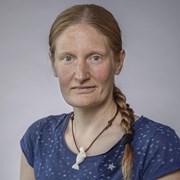Hybrid Models Combining Machine Learning and Physical Knowledge

Maximum exploitation of the electricity grid requires robust models of physical units
To maximally exploit existing infrastructure, Statnett are developing models to monitor and predict the temperature of their power transformers. For the models to be useful, it must be robust, easy to transfer across many units, and ideally provide uncertainty estimates. A hybrid model combining a simple physical description with neural networks can ensure physical behaviour of the resulting models, while the flexibility enables easy adaptation for individual units. Topics to explore:
- Use of neural ODEs and pseudo-Hamiltonian methods.
- Quantification of minimal data requirements and possibility of continuous training.
- Uncertainty propagation through the model. This has not been sufficiently investigated for hybrid models.
- Transfer of methods to other types of equipment, e.g. underwater cables.
Available data: Statnett has data from several power transformers and some initial modelling show promise, but more work is needed.
Hybrid Modelling and Uncertainty Quantification
In the energy sector, wind turbines, compressors or other production facilities are typically numerically simulated. While those simulations are precise, they are too computationally expensive to use for inference about unknown parameters. The idea is to use machine learning as a surrogate model and explore the uncertainty of the trained model, both on simulated and real data.
A project example could be to measure relations between uncertainty and distance between data. The first task will be to systematically investigate the model performance of a model on different data as a function of difference between the data sets (K-S test), sample sizes and noise. Next step is to explore how the model transfers when including domain knowledge (hybrid AI). The end goal of the project is to use an AI model to mimic the simulation and transfer the model to real data. Both performance and uncertainty aspects can be explored. The project may be based on the same data/model as the project above (Statnett power transformers).
Adaptive physical models and simulations are the backbone of digital twins
Industry is heavily relying on numerical simulations of physical systems to predict future conditions and potential failures of complex systems. However, these simulations are initalised based on ideal conditions, which may not be true under realistic usage. Hence, the initialisations must be frequently updated for the simulations to match observed data. Simulation-based inference is an established way to effectively learn the likelihood distribution of simulation parameters given data. However, the framework is far from plug-and-play due to e.g. hyper parameters and appropriate formulation of summary statistics. The student will demonstrate the framework in a process-industrial setting using the simulator framework DWSim.
Required skills: Strong familiarity with Bayesian statistics, neural networks, pytorch, basic understanding of PDE/ODEs.
These projects can be adapted to students from several departments such as Computer Science, Mathematical Sciences or Engineering Cybernetics. The student will need a supervisor associated with the university, but SINTEF can provide most of the practical supervision.
Student requirements: Solid knowledge of neural networks and implementation, basic knowledge of ODE/PDEs as descriptions for physical systems, basic to solid knowledge of statistics.

